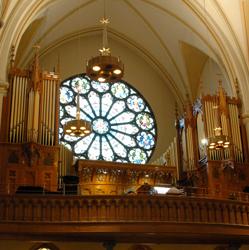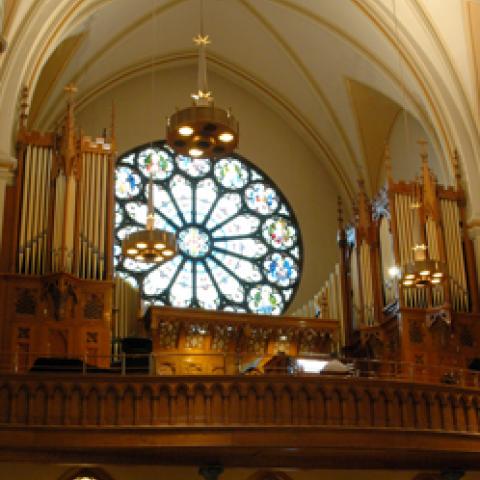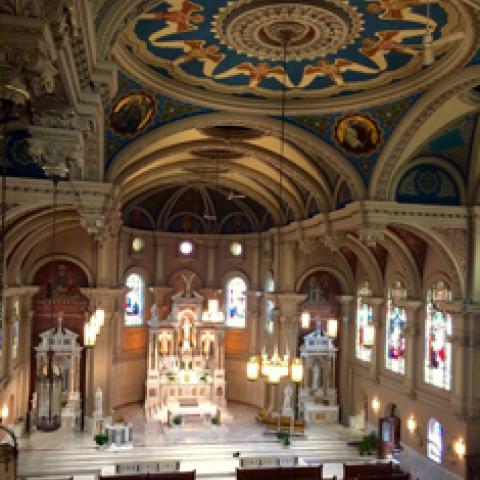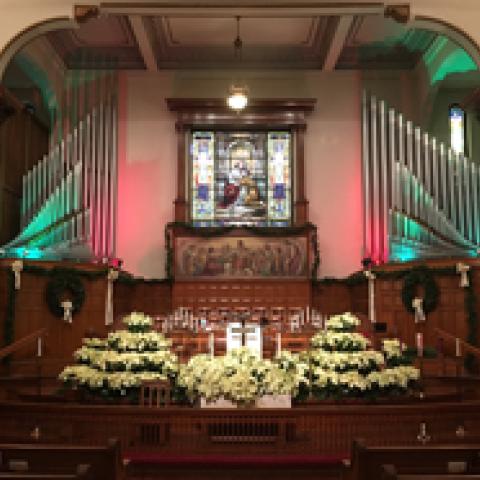
Church of the Gesu, Milwaukee, Wisconsin, presents organ recitals Tuesdays at 7:30 p.m.: June 9, David Jonies; July 14, Simone Gheller; August 11, Bryan Dunnewald; September 8, Jeff VerKuilen; October 13, John Paradowski; December 8, Rob McWilliam.
The Schantz Organ Company of Orrville, OH, rebuilt and enlarged the Gesu pipe organ in 2011. The new organ preserves the heritage of its predecessors—including the Lower Church Johnson/Wangerin organ—by integrating a significant number of their pipes. The Kimball case was minimally altered by Schantz, however the non-speaking façade pipes were created anew. All other mechanicals and infrastructure of the organ were created new by Schantz. The organ contains 115 ranks/6,804 pipes divided into 90 stops in six divisions, and a 4-manual console based on the Peterson ICS-4000 control system.
For information: www.gesuparish.org.







